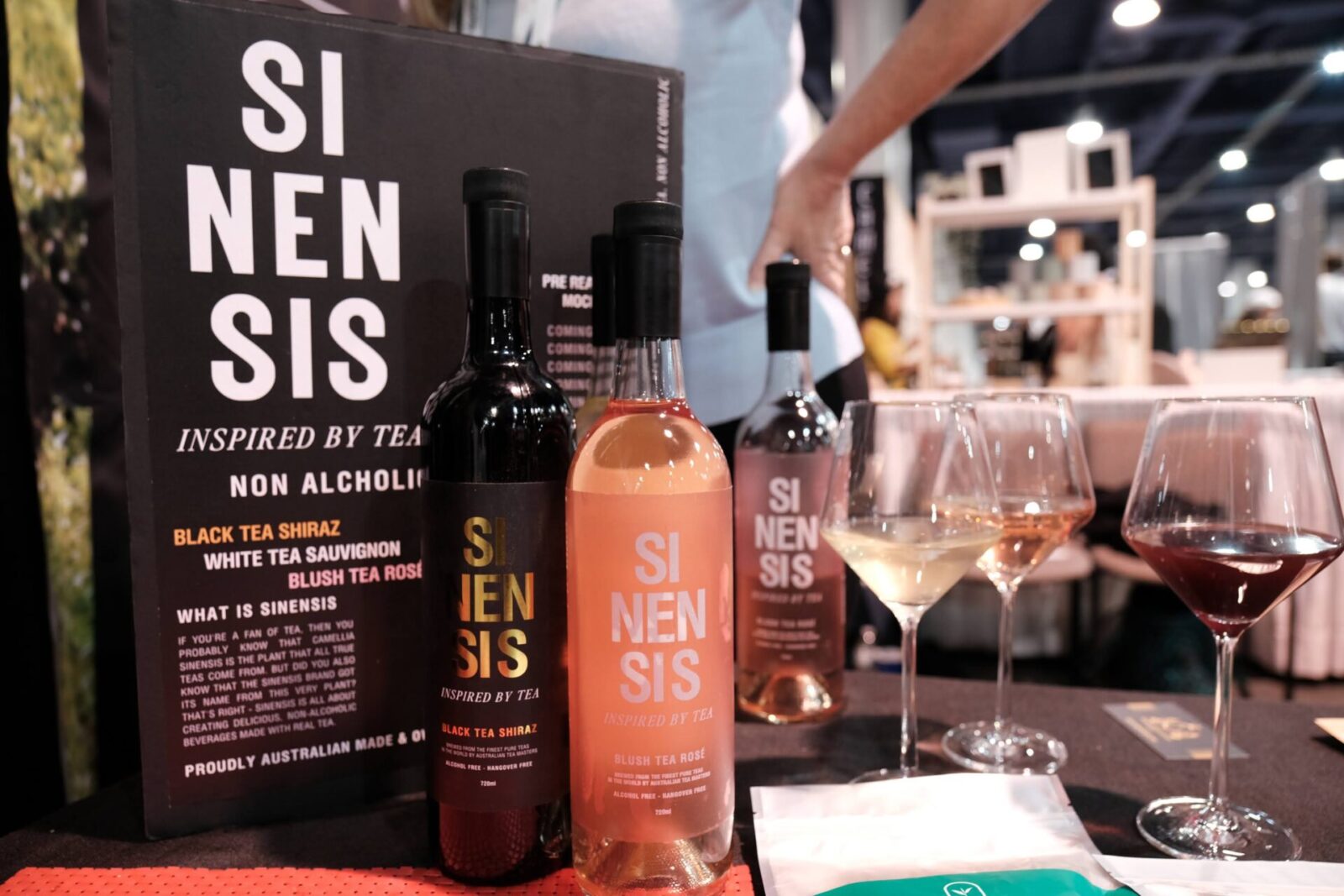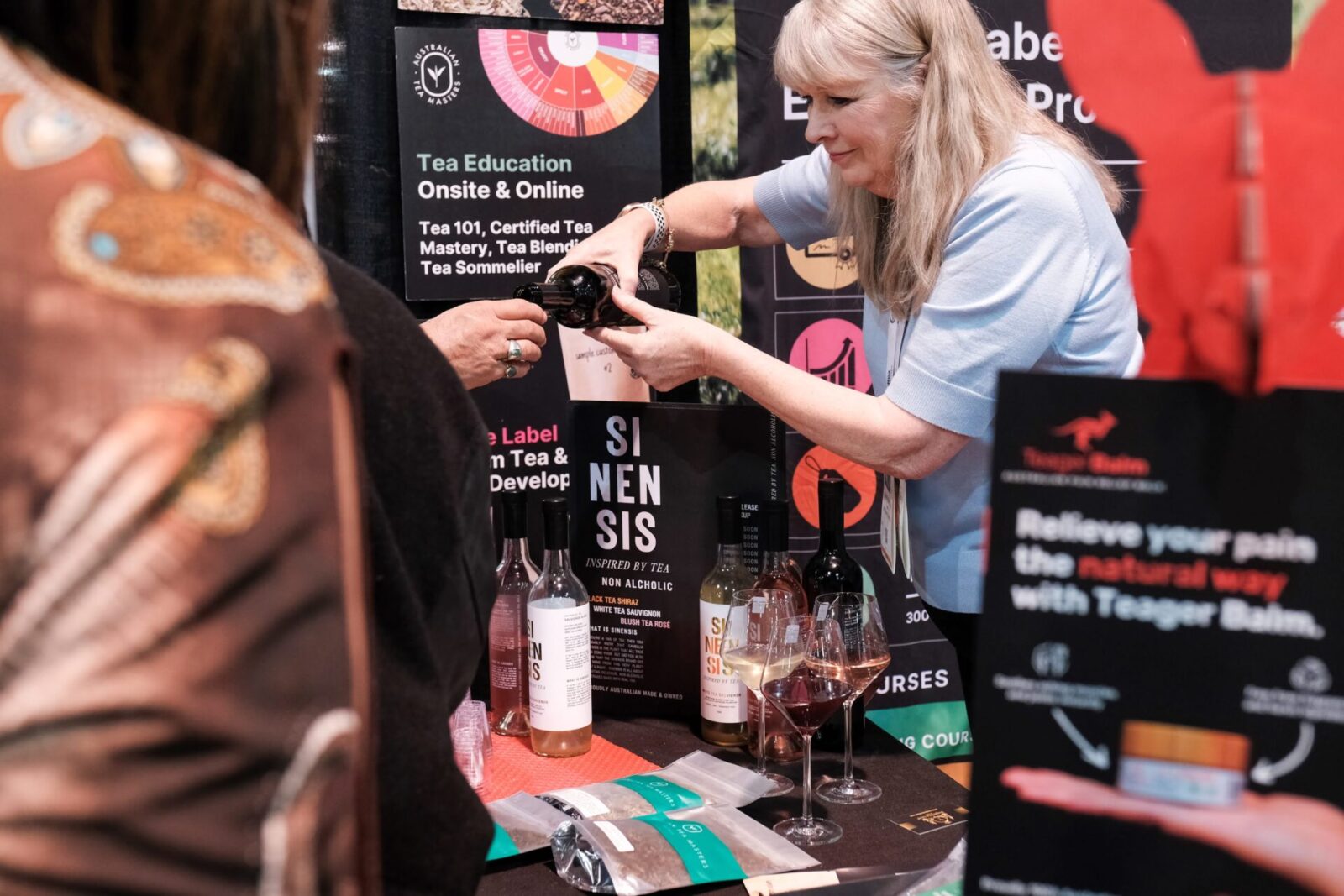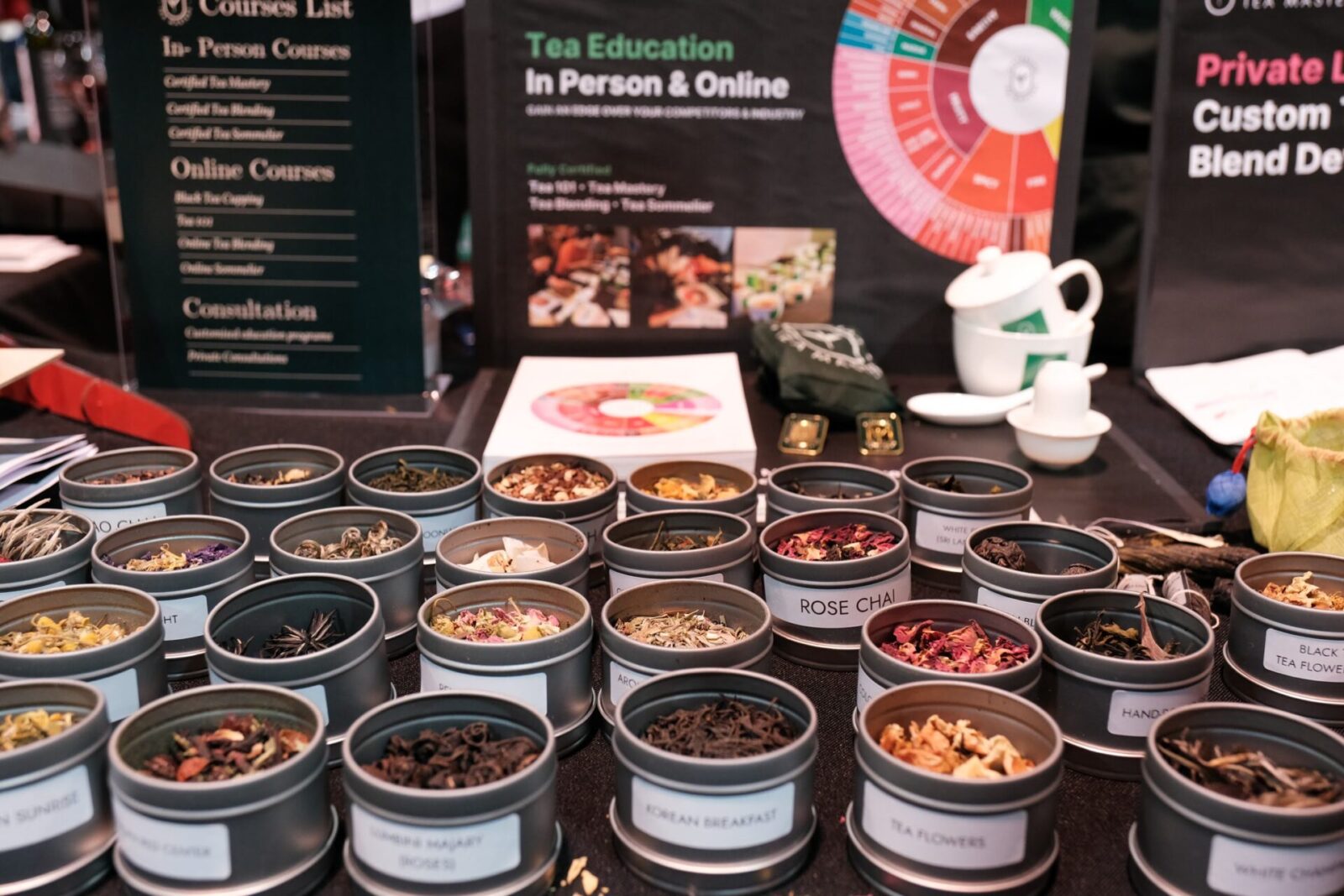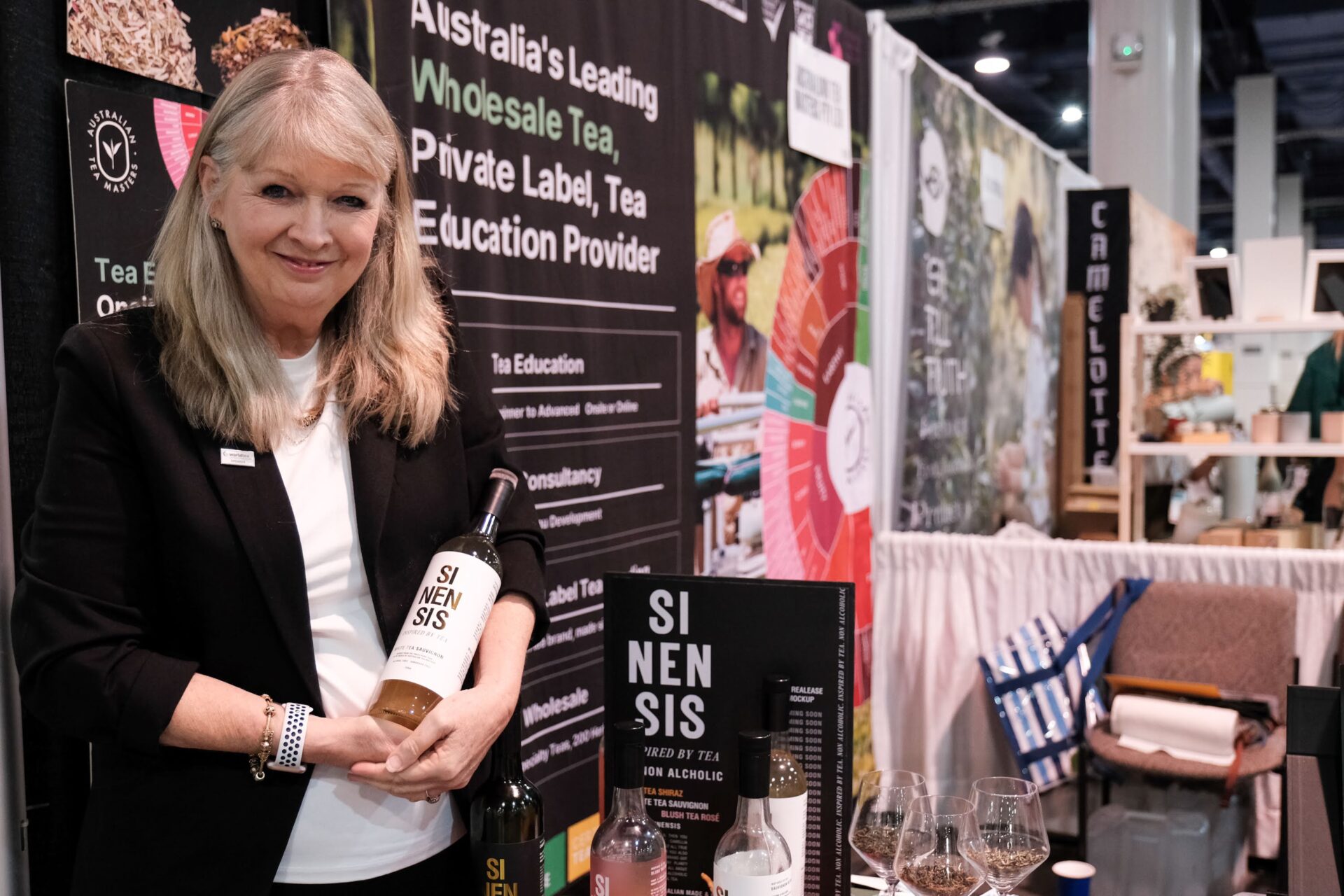When Sharyn Johnston unveiled a trio of non-alcoholic wine alternatives at the World Tea Conference & Expo in Las Vegas in March, the overwhelmingly positive reaction was almost palpable.
“This is Sinensis, created, brewed and bottled in Australia,” Johnston introduced her beverage brand to the judges of an innovation contest at the expo. “There is a sauvignon blanc, this is a rose and this is a shiraz,” she said, adding that they are made by blending different types of tea with grape extract.
The judges looked at her in disbelief at first, but it only lasted for a minute or so. As soon as they tasted Sinensis — in a wine glass, they were sold.
Sinensis, the judges announced, was the winner of the innovation award.
Johnston is the founder of Australian Tea Masters, a one-stop provider of everything tea-related, from selling teas and herbs sourced around the world, custom blending and business consulting, to tea education. Her creation of Sinensis not only demonstrated her mastery as a tea blender, but also her business instinct to respond to a rising demand for non-alcoholic drinks.
In this conversation, Johnston shared the origin story of Sinensis and future plans of the brand. We also asked about her approach towards tea blending and the potential opportunities for Japan’s tea industry.
Drinking “tea” in a wine glass

— Where did the idea of making non-alcoholic wine alternatives come from?
I always wanted to do things that promote tea as a healthy beverage, and I could see the non-alcoholic market was growing across the world. Why couldn’t we have a non-alcoholic drink that makes people feel like they are drinking wine? And so I decided to do a wine making course to understand the whole process.
Then I thought, I got some amazing tea, why not incorporate that with some beautiful grapes? So I spoke to my partner, who is a food chemist and biochemist. We brewed a lot of tea and used a lot of grapes until we came up with a final product.
I took that to Indonesia, which is a Muslim country. People loved the fact that they could put it in a wine glass and experience it like a glass of wine. It just inspired me to try and create something that could be enjoyed with the same flavor profile, without it being dealcoholized.
A lot of the dealcoholized wines have a lot of sugars in them, and they just don’t taste like wines. Whereas I captured that flavor now with tea and with wine.
— How did you decide on making the three alternatives — sauvignon blanc, shiraz and rose?
When we look at the Australian market, there is always a white, a rose and a red. Shiraz is a very popular red. White wines that are not too sweet are very popular in Australia too. Rose is what a lot of younger people turn to. So that’s how we decided one in each category.
We tasted inexpensive reds to expensive ones to try to get to a flavor that was really good and matched maybe a bottle of red around AUD 80. So we are happy with that.
Trying to make cabernet sauvignon or pinot noir is going to be another process again, because we not only use tea, but also put some herbs and spices to add a peppery note that you get from Shiraz. So we would have to do a lot of work and go through a lot of drinking to get the profile right (laugh).

— How do you replicate the wine experience with Sinensis?
The number one thing is aroma — it must have that aroma of wine when you bring it to your nose.
Secondly, the sipping — when you take a sip, it must make you feel like you are drinking wine.
And thirdly, breaking down the profile. You get all sorts of different notes in teas and wine. I have tasted a lot of tea and judged tea competitions all over the world. So I’m quite experienced in the type of taste profiles of different countries. Hence why I chose Himalayan Shangri La Gold black tea for the Shiraz, Korean Joonjak green tea for the sauvignon blanc, and Indonesian Silver Needle white tea for the rose.
As for grapes, it’s common in Australia to eat a lot of grapes and we can buy local grapes. I have worked with a lot of herbs too, so I understand what I can draw out from them to put together a profile.
It’s a very time-consuming process, that’s why it took us two years of trialing.
— Now that Sinensis was officially launched at the World Tea Expo in Las Vegas. What’s the plan going forward?
We’ve lined everything up to make as many as 10,000 bottles every two days if we want to. We are ready to export to other countries. Sinensis is priced at AUD 22, so it’s quite reasonable in many markets.
Once we launched in Las Vegas, we’ve gotten inquiries from the US, and from Indonesia, obviously for the Muslim population. I sent it to my friends from France, Latvia and Denmark, and they were all blown away by it. We haven’t physically launched into those markets yet, just trialing with people we know. There has been really good feedback.
We want our products to be appreciated overseas for the efforts we have put into it.
— In terms of demographics, who are your target customers?
I don’t think there is a box that you can put the demographics in. In Australia, there is a big push on not consuming so much alcohol for health reasons. It’s going to be quite interesting because both young and old generations can have it.
It would depend on the way it’s marketed. When I was in the US, I went into bottle shops and many of them didn’t have any non-alcoholic wines. We are looking at the health market, particularly premises that don’t want to serve alcohol, or don’t have a license for alcohol. Those would be a good place to market our products.
— Are you planning to launch another product soon?
We want to grow our non-alcoholic range. We have got four mocktails ready to go soon. And then the next thing will be a champagne-style bubbly. We will also look at different sizings. We can do cans and bottles of different sizes to suit the market.
Diversifying Japan’s tea portfolio

— Over the years, you have crafted a lot of tea blends for your clients. Can you share with us your approach towards blending? Where do you start?
First, it depends on whether the client wants caffeine or not. That would decide whether it’s going to be tea-based, or if it’s herb-based. If we’re going to do a blend with little or no caffeine, we can use hojicha or rooibos.
Then we have to define whether the blend has a specific function, such as relaxation, energizing or other benefits. The market is trending very much towards wellness blending, and a lot of functional wellness blends actually do not contain tea, just herbs.
— How do you create a blend that reflects the terroir?
You could incorporate local ingredients into the tea. In Japan for example, you could use citrus fruits like yuzu, or seasonal ingredients such as cherry blossoms. I always wonder why you can’t get cherry blossoms in Australia. If Japan can export dried cherry blossoms to Australia and other countries, it will be really nice to offer sakura blends during the cherry blossom season and make a story out of it.
— That’s an interesting point. Japanese confections (wagashi) often use seasonal ingredients, but you don’t see as much in tea blends.
Japan is very traditional and is not spreading out other than the traditional ways of farming. Japan has beautiful teas — genmaicha, macha, gyokuryo, sencha… — no doubt about it, but there is a big opportunity just to diversify a bit.
I would like to see more varieties of tea from Japan. Japan is producing oolong and sun rouge, but people don’t even know that exists. And I think it would be very nice to have a range of black teas from Japan as well, rather than just being known for green tea.
— Any advice or suggestions on how Japan can diversify its tea offerings?
Japan is the leader in technology for tea, such as machinery, teabagging, overwrapping, etc., but I think there is an opportunity to take teas from other countries to Japan to show them what’s been done outside.
It can benefit from using herbs from other countries. It can also look at some of the varieties of fruits that could be imported. And spices as well — people in Korea and China use spices for cooking, so it is hard for them to imagine putting spices into a tea blend. Broad mindedness is important.
Marco is a design researcher who works with small to large companies to develop new products and services. Before stepping into the world of design consulting, he spent 10 years working as a financial journalist in Hong Kong, Tokyo and New York. Marco is also the host of KIKITE, an interview podcast.
Editor and creator of the future through words. Former associate editor of Huffington Post Japan. Became independent after working for a publishing company and overseas news media. Assists in communications for corporates and various projects. Born in Gifu, loves cats.
Marco is a design researcher who works with small to large companies to develop new products and services. Before stepping into the world of design consulting, he spent 10 years working as a financial journalist in Hong Kong, Tokyo and New York. Marco is also the host of KIKITE, an interview podcast.
